#martha ellis gellhorn
Photo

"People often say, with pride, 'I'm not interested in politics.' They might as well say, 'I'm not interested in my standard of living, my health, my job, my rights, my freedoms, my future or any future.'... If we mean to keep any control over our world and lives, we must be interested in politics."
Martha Ellis Gellhorn (November 8, 1908 February 15, 1998)
24 notes
·
View notes
Quote
People often say with pride, 'I'm not interested in politics.' They might as well say, 'I'm not interested in my standard of living, my health, my job, my rights, my freedoms, my future or any future.' ...If we mean to keep any control over our world and lives, we must be interested in politics.
Martha Ellis Gellhorn
9 notes
·
View notes
Text
Martha Ellis Gellhorn: A born fighter
Martha Ellis Gellhorn: A born fighter
Martha Ellis Gellhorn, first female war correspondents, American novelist and a journalist life journey is mostly known to all. However, her road to success was not an easy one. From dropping her college to pursue her passion of journalism and, to achieve zenith in her career, Martha Gellhorn, one of the popular renowned journalist of the 20th century left no stone unturned to print her name on…
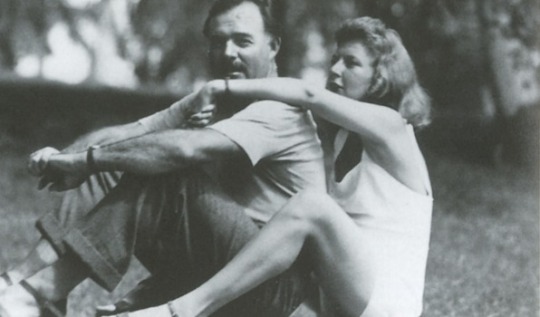
View On WordPress
1 note
·
View note
Photo

Martha Ellis Gellhorn, who as one of the first female war correspondents covered a dozen major conflicts in a writing career spanning more than six decades, died on Sunday at her home in London. She was 89. Ms. Gellhorn was a cocky, raspy-voiced maverick who saw herself as a champion of ordinary people trapped in conflicts created by the rich and powerful. That she was known to many largely because of her marriage to Ernest Hemingway, from 1940 to 1945, caused her unending irritation, especially when critics tried to find parallels between her lean writing style and that of her more celebrated husband. ''Why should I be a footnote to somebody else's life?'' she bitterly asked in an interview, pointing out that she had written two novels before meeting Hemingway and continued writing for almost a half-century after leaving him. As a journalist, Ms. Gellhorn had no use for the notion of objectivity. The chief point of going to cover anything, she felt, was so you could tell what you saw, contradict the lies and let the bad guys have it. ''You go into a hospital, and it's full of wounded kids,'' she once said. ''So you write what you see and how it is. You don't say there's 37 wounded children in this hospital, but maybe there's 38 wounded children on the other side. You write what you see.'' Though best known for her groundbreaking journalism, Ms. Gellhorn was also an accomplished fiction writer, author of 5 novels, 14 novellas and 2 collections of short stories, many of which were based on people and incidents she encountered during her prodigious travels. She covered the blitz in London. On D-Day, she stowed away on a hospital ship and snuck ashore as a stretcher bearer. She got British pilots to let her ride along on night bombing raids over Germany. When the Allies liberated Dachau, she was there to write about it. "Behind the barbed wire and the electric fence,'' she wrote of her visit to Dachau, ''the skeletons sat in the sun and searched themselves for lice. They have no age and no faces; they all look alike and like nothing you will ever see if you are lucky.'' via RICK LYMAN NYT #theunsungheroines
10 notes
·
View notes
Photo
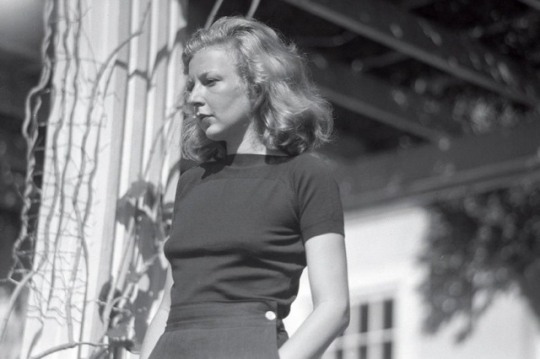
Martha Gellhorn, única mulher a desembarcar na Normandia no Dia D
Uma Mulher no Dia D - História
Martha Gellhorn
Na véspera do desembarque na Normandia, em junho de 1944, havia mais de mil correspondentes de guerra em toda a Europa relatando os milhões de britânicos e norte-americanos de volta para casa. Um punhado desses jornalistas e fotógrafos também eram mulheres. Infelizmente, o governo proibiu as mulheres de irem para as linhas de frente, de modo que, embora essas mulheres pudessem cobrir histórias da zona de guerra, elas não poderiam entrar com as tropas.
Compreensivelmente, muitas mulheres correspondentes de guerra não ficaram felizes com a proibição.
"É necessário que eu relate sobre esta guerra", escreveu Martha Ellis Gellhorn em uma carta raivosa às autoridades militares: "Eu não sinto que haja necessidade de implorar como favor para o direito de servir como os olhos de milhões de pessoas." na América que estão desesperadamente precisando de ver, mas não podem ver por si mesmos ”.
Martha Ellis Gellhorn era uma correspondente de guerra americana da revista Collier. Alguns de vocês podem conhecê-la como a terceira esposa de Ernest Hemingway, mas suas realizações como jornalista superam em muito seu breve casamento com o romancista.
Gellhorn começou sua carreira como jornalista durante a Grande Depressão, trabalhando como pesquisador de campo da Federal Emergency Relief Administration (FERA) criada por Franklin D. Roosevelt para relatar o impacto da Depressão no país. Mais tarde, ela viajou para a Espanha para cobrir a Guerra Civil Espanhola em 1937. Durante este período, ela conheceu Ernest Hemingway, que também estava na Espanha como correspondente. Eles se casaram em 1940, ela se tornou a terceira esposa de Hemingway, e Hemingway se tornou o segundo marido de Gellhorn.
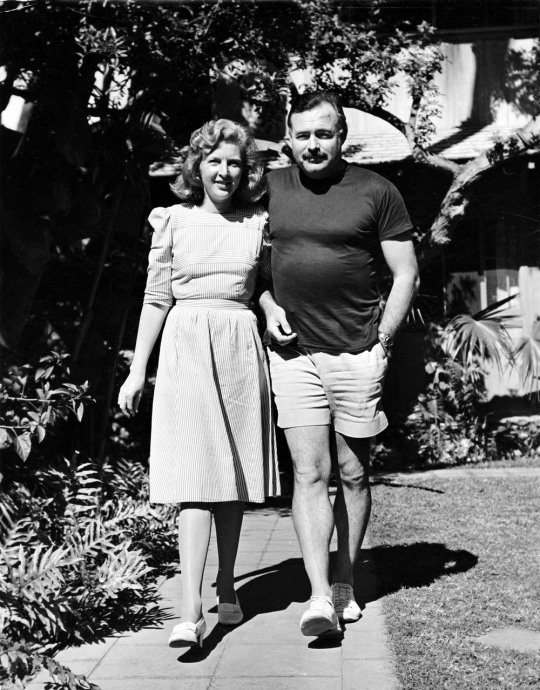
Martha Gellhorn e Ernest Hemingway
O casamento de Gellhorn e Hemingway foi problemático desde o início. Hemingway recusou-se a deixar sua segunda esposa, mesmo quando os dois se viam, e as longas ausências de Gellhorn durante suas reportagens irritavam Hemingway. Quando o Dia D se aproximou, o casamento deles já estava morto. Para se equilibrar com Gellhorn, Hemingway foi credenciado como o correspondente de Colliers, a revista em que Gellhorn trabalhava, bloqueando qualquer chance que Gellhorn pudesse ter de chegar às linhas de frente.
Martha Gellhorn não estava pronta para desistir.
Na noite de 6 de junho de 1944, antes de os navios partirem para a Normandia, Gellhorn dirigiu-se à beira-mar com o pretexto de entrevistar as enfermeiras a bordo de um navio-hospital. Uma vez a bordo, ela se escondeu no banheiro. Gellhorn sabia que, se fosse flagrada, perderia o credenciamento e poderia até ser deportada de volta para a América. Ainda assim, testemunhar a grande invasão valeu o risco. Gellhorn permaneceu em seu esconderijo por várias horas e só emergiu quando o navio estava a caminho da França. Mais tarde naquela noite, depois que as tropas desembarcaram e o massacre na praia finalmente acabou, Gellhorn entrou furtivamente em terra com um par de médicos e como um maqueiro para recolher os feridos. No caos da guerra, ninguém dava a mínima por Gellhorn ser uma mulher.

“Táxis para o inferno - e de volta - para as garras da morte”, uma das fotografias mais famosas do desembarque do Dia D por Robert F. Sargent
Martha Gellhorn tornou-se a única mulher a desembarcar na Normandia no mesmo dia em que as tropas o fizeram. Outras mulheres a seguiram, mas muito depois. O primeiro grupo de mulheres - membros do Corpo de Exército das Mulheres dos Estados Unidos - desembarcou na Normandia trinta e oito dias depois. Logo depois que Gellhorn publicou sua história na Collier's, a polícia militar prendeu-a. Eles levaram suas credenciais e a transportaram para um campo de treinamento de enfermeiras fora de Londres. Gellhorn escapou do acampamento convencendo um piloto britânico a levá-la para a Itália.
"Eu segui a guerra onde quer que eu pudesse alcançá-la", lembrou Gellhorn.
Martha Gellhorn continuou cobrindo os conflitos em que seu país estava envolvido. Ela cobriu a Guerra do Vietnã e os conflitos entre árabes e israelenses nos anos 60 e 70. Ela ainda estava no front relatando as guerras civis na América Central com a idade de setenta anos, e incrivelmente, a invasão do Panamá pelos Estados Unidos em 1989, aos oitenta e um anos de idade. Foi só quando a guerra chegou à Bósnia que ela decidiu desistir, anunciando que era "velha demais" e "pouco ágil" o suficiente para a guerra.
Quando Gellhorn entrou no final dos anos 80, sua visão começou a falhar e ela ficou quase completamente cega. Ela também estava sofrendo de câncer de ovário que se espalhou para o fígado. Ela cometeu suicídio em 1998, aos noventa anos, engolindo uma cápsula de cianeto.

Martha Gelhorn mais nova
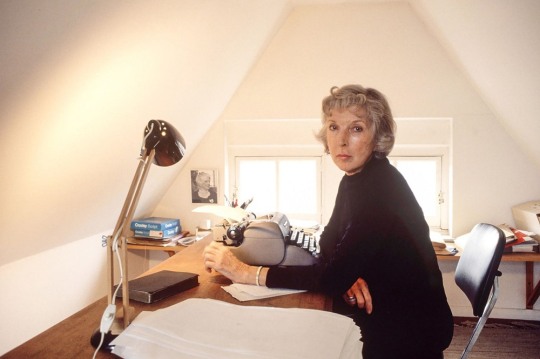
Martha Gellhorn em 1978, aos setenta anos. Crédito da foto: Graham Harrison / Rex / Shutterstock (última foto dela idosa)
Fonte:
https://www.amusingplanet.com/2019/05/martha-gellhorn-only-woman-who-landed.html?m=1&fbclid=IwAR2P43qomuPqc-k_wPmyMrKzyAMlAy-Vcw5rf_dK9TJsS9N_6S_I13HfRZ0
-.-.-.-.-.-.-
Até o Próximo post...
Forte Abraço!
Osmarjun
0 notes
Text
Martha Ellis Gellhorn, la única mujer que desembarcó en Normandía el Día D
Probablemente muchos lectores sabrán quién fue Martha Ellis Gellhorn pero, para quienes no, decirles que no se trata de uno de esos personajes que a veces se meten con calzador en las películas bélicas. Fue la única mujer, que se sepa, que desembarcó en Normandía el Día D
etiquetas: historia, segunda guerra mundial, martha ellis gellhorn, normandía
» noticia original (www.labrujulaverde.com)
0 notes
Text
Biography of Martha Gellhorn
Martha Ellis Gellhorn famously known as Martha Gellhorn was known to be a novelist of an American origin, a writer as well as a journalist. She was famous mostly because of her journalism skills and the urge to be a foreign reporter made her a global name. She was also referred to as a war correspondent of the 20th century and was the best in what she did. She had an ardent interest in war stories and made sure that she covered each and every war story from around the world. Her stint as a war journalist lasted for around 60 long years. Apart from being a global name for war journalism, she was also famous as the third wife of the world famous American Novelist Ernest Hemingway. The marriage lasted for around five years but it no doubt brought about limelight to her life. She had to face a lot of criticisms from people when they compared her writing along with the writings of her husband. She believed bringing out her voice to the world according to the vision that she saw and not copy her husband just because he was a famous novelist known for his beautiful writing.
Childhood and Early Life
• Martha was born on the 8th of November 1908 to George Gellhorn and Edna Fischel Gellhorn in St. Louis, Missouri. Her mother Edna Fischel Gellhorn was a suffragist and her father George Gellhorn was a gynecologist.
• She had two brothers who had great careers and excelled in whatever they did.
• Martha had a rebellious nature and did what she felt was right and these traits flowed through her genes where her mother too was a social activist and believe in letting people enjoy their rights.
• Martha graduated from her high school John Burroughs School in the year 1926 and got herself enrolled in Bryn Mawr College but left midway in the year 1927 to pursue a promising career in Journalism.
• She made sure that her articles were put out for the world to see and thus they got published in The New York Republic and this continued till the year 1930.
• She grasped the various messages that the world conveyed to her and eventually published her very first publication named ‘What Mad Pursuit’ in the year 1934.
• She later came to America to find herself with a job with the Federal Emergency relief Administration. During the ‘Great Depression’ in America and thus she became the official reporter for the ‘Great Depression’ where the government stored the contents that she captured and were the official correspondence files.
Career
• She continued being a war journalist with a rebellious nature. She was hired for ‘Collier’s Weekly’ where she reported on Adolf Hitler who has recently become famous for his deeds.
• She covered the details and the situations of the World War 2 from countries like Singapore, Burma, Finland, England and Hong Kong.
• Martha made sure that she reached the depth of the war situation and made sure that no one caught her red handed while covering the war stories. On June 6th, 1944, she was the first woman to reach Normandy and also report from the Dachau Concentration camp after the camp availed independence from the Allied troops.
• She later was employed for the ‘Atlantic Monthly’ where she covered the Vietnam War and the troubles between the Arabs and the citizens of Israel during the 60s and the 70s.
• She was soon realizing that her body was giving up due to age as she had almost reached her 70th year and thus couldn’t manage to run about to places and countries in order to cover stories of political conflict.
Major Works
• Apart from being a fierce journalist, Martha Gellhorn was a novelist as well as a travel writer. She put down her experiences and the real emotions of the lives of the grief stricken people in words and publish acclaimed books named ‘A stricken Field’ in the year 1940, ‘The face of War” in the year 1959, ‘The Lowest Trees have Tops’ in the year 1967, ‘Travels with Myself and Another’ in the year 1978 and finally ‘The view from the Ground’ in the year 1988.
Awards & Achievements
• Being a globally famous war journalist during the time when women weren’t given much importance brought about a change in the lives of several women. Martha Gellhorn became an inspiration for women and years later in 2007, the United States Postal Service announced a stamp in honor of the best journalists of the 20th century. There was an award announced on her name where journalists from around the world were commemorated with an award each year for writing outstanding journalism content in English either for newspapers or the Internet.
Personal Life & Legacy
• Martha Gellhorn had several love affairs but had found true love when she met Ernest Hemingway. She married him in the year 1940 but parted ways in the year 1945 with a divorce.
• She disliked being compared to his writings and wanted to be an independent novelist with a unique way of putting down her thoughts.
• She had a second marriage to the former managing editor of the Time Magazine named T.S. Matthews in the year 1954. She had planned a sorted life with him by shifting to London but later divorced him after around 11 years.
• She had adopted a baby boy in the year 1949 but soon had sour relationships with him as she had other priorities.
• Towards the end of her life, Martha was almost blind, suffered from ovarian cancer and was reported to commit suicide and end her life by swallowing Cyanide.
Trivia
• Martha Gellhorn was considered to be a woman who was sexually manipulative and didn’t involve in physical relationships with her partners with her personal consent. She was also described as ‘conscientious’.
from WordPress https://ift.tt/2EJdZpK
via IFTTT
0 notes
Text
Martin Garrix Quotes
Are you interested in famous Martin Garrix quotes?
Here is a collection of some of the best quotes by Martin Garrix on the internet.
About Martin Garrix
Martha Ellis Gellhorn (November 8, 1908 – February 15, 1998) was an American novelist, travel writer, and journalist, who is now considered one of the greatest war correspondents of the 20th century.
Famous Martin Garrix quotes
The desired…
View On WordPress
0 notes
Text
91. Martha Ellis Gellhorn (1908–1998)
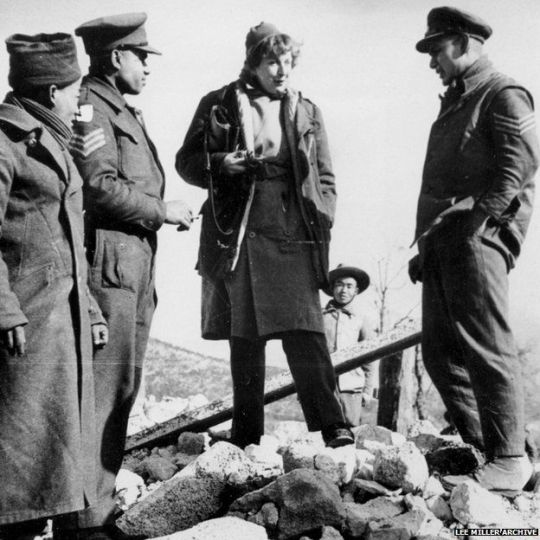
Martha Gellhorn speaking to Italian soldiers during World War II. Photo taken by Lee Miller (a future subject of for this blog).
Raised in a feisty feminist household, Martha Ellis Gellhorn started in life with many privileges and all the nurturing that an ambitious little girl could only dream of. Her mother was very active in the suffrage movement and from early on brought Martha with her to marches and parades in their native St. Louis. As he grew up, the young woman chose Bryn Mawr as her destination and went to school with the goal of becoming a journalist.
Gellhorn’s ambitions were to travel the world and report from every conceivable spot and event, and the context in which she matured provided endless opportunities and challenges. She started by spending a few years in Paris working for the United Press bureau there. The circles she frequented there were those of the pacifist movement and Gellhorn became a prominent voce in this grouping, especially with her book What Mad Pursuit (1934).
As Europe was shifting towards a warring path, especially with the beginning of the Spanish Civil War in 1936, Gellhorn yearned to be present in the field and tell the stories of the Republican struggle against the Franco troops. It was also during this time that her famous relationship with Ernest Hemmingway began. Though enamored with the writer’s charisma, Gellhorm resented being thought of Hemmingway’s plus one. She often clashed with him on her ambitions to travel, see, and report, and frequently disregarded his pleas and anger. So, although they spent part of the Civil War and later World War II together, Gellhorn never hesitated in following news tips across the world rather than staying behind in the comfort of her husband’s hotel room.
In the mid-1930s Gellhorn spent time also working for the Federal Emergency Relief Administration to document the effects of the Great Depression. Among others, she came to know Dorothea Lange, whose contributions are described elsewhere on this blog. She travelled with Lange as a team and provided many reports on the homeless and dispossessed. That documentary evidence has remained an important source for historians later on.
Gellhorm ended up in crucial spots at the right time for breaking news, and thus became a legend in her own time. In the spring of 1938 she was in Czechoslovakia as the Munich Agreement was about to be signed and that country dismembered. She later reported about the war from Singapore, Burma, Finland, and England. Towards the end of the war, she hid on a transport as a way to get to Normandy on D-Day, as she was not allowed to have press credentials. She was the only woman on the battlefield that day. Later, she was the first female journalist to arrive in Dachau with the U.S. troops when the infamous camp was liberated. As a witness and talented wordsmith, she greatly shaped how the English-reading public initially understood the horrors of the Holocaust.
After World War II, Gellhorn worked for the prestigious Atlantic Monthly and helped covered the Vietnam War and the Arab-Israeli conflicts of the 1960s-70s. She continued to be active until the end of the 1980s. By then she was in her ‘80s and could not travel easily any longer. Her last reportage of significance came out in 1995 in the literary journal Granta, an expose of the social inequalities and poverty in Brazil. Insistent on living her life on her own terms, in 1998 she committed suicide after being diagnosed with ovarian cancer. She was 89.
#martha gellhorn#journalism#war correspondent#spanish civil war#world war ii#dachau#munich agreement#pacifist#feminist#ernest hemmingway#lee miller#dorothea lange#d-day#atlantic monthly
0 notes